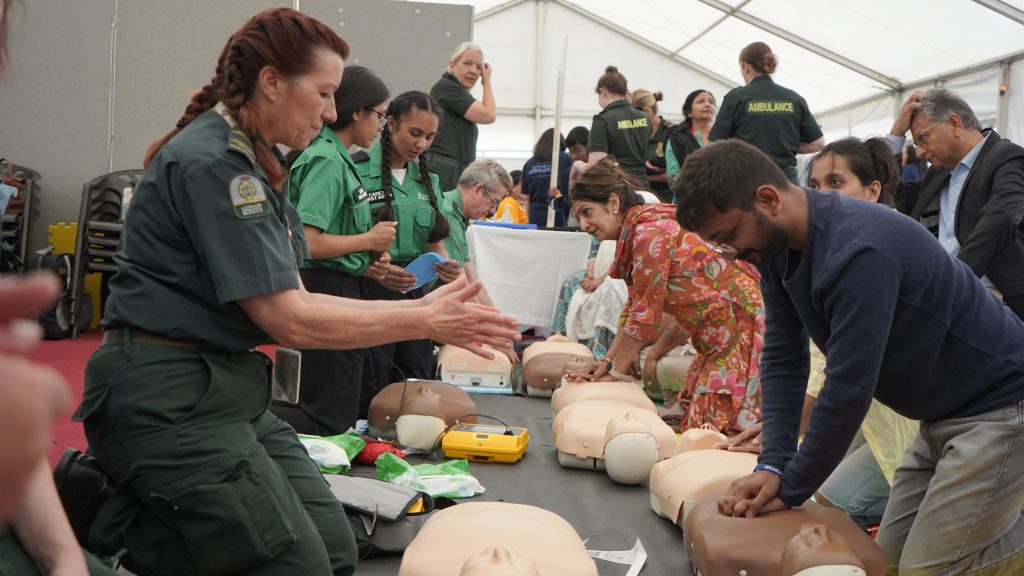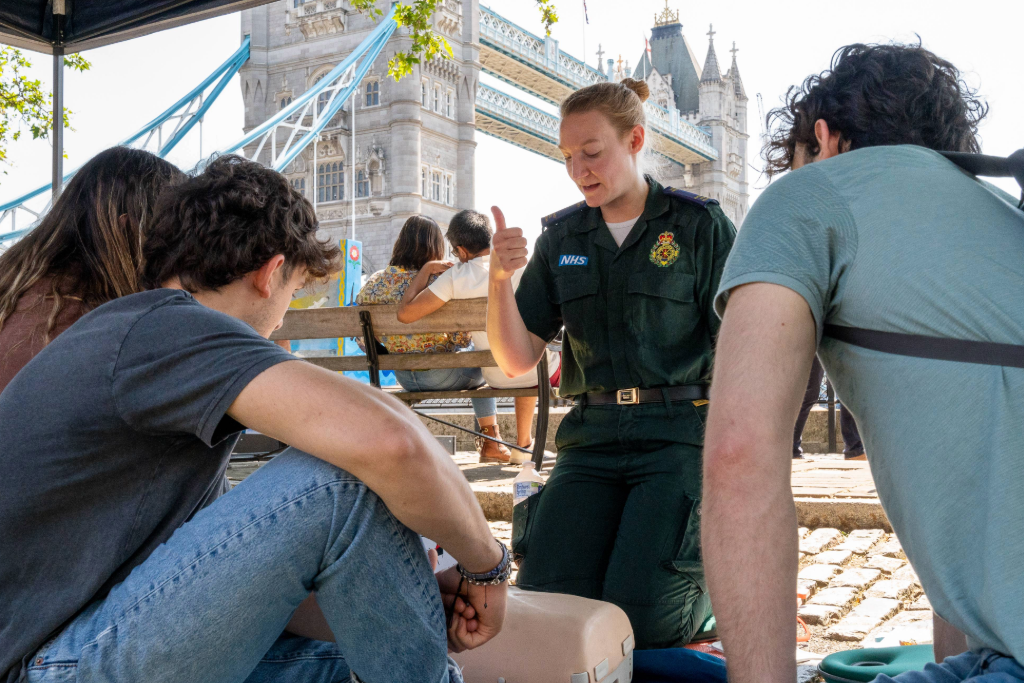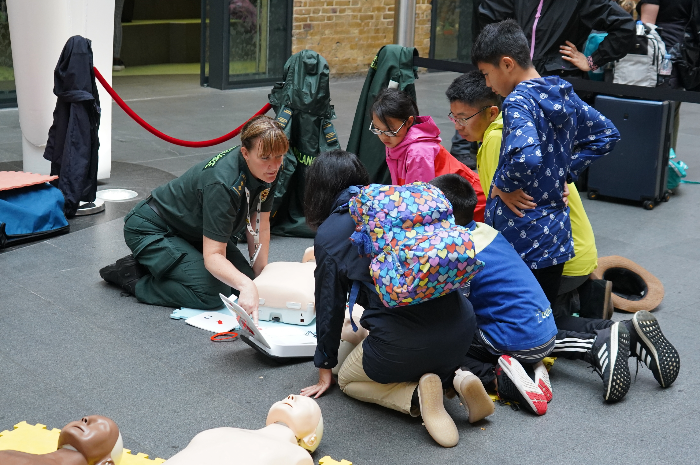Londoners urged to make New Year resolution to help more than 12,000 people who will suffer a cardiac arrest in 2025
More than 12,000 Londoners will suffer a cardiac arrest in 2025, according to forecast figures from London Ambulance Service, as it called on the public to do more to help increase survival.
The estimate comes as the country’s busiest ambulance service publishes an annual report, prepared by its Clinical Audit Research Unit, showing the latest data for cardiac arrest in the capital in the financial year to the end of March 2024.

The report shows an encouraging increase in survival from out-of-hospital cardiac arrest, which has returned to pre-pandemic levels (9.8 per cent) following an improved emergency response.
It attributes the improvement to a significant reduction in call answering times (from 42 seconds down to 9 seconds), faster delivery of dispatcher-assisted CPR instructions (a 12 second decrease), a reduction of over three minutes in the time taken to arrive on-scene, and the faster provision of CPR and defibrillation by clinicians.
As a result, a higher number of patients presented with a shockable rhythm achieved a return of spontaneous circulation that was sustained to hospital, and survived to 30 days post-cardiac arrest.
However, while two thirds of patients received help from a bystander, there was a reduction compared to previous years.
When bystanders intervene and provide CPR in the moments before an ambulance arrives, the chance of survival is double compared to times when no attempt was made. When a defibrillator is used in that window of time, the chance of surviving quadruples.
London Ambulance Service renewed its call for Londoners to get behind the London Lifesavers campaign and learn skills like chest compressions (CPR) and how to use a defibrillator to improve survival rates for cardiac arrests – where the heart stops pumping blood and oxygen around the body.
It said it has trained 10,000 school children in CPR during 2024 and plans to achieve a similar number in 2025.

As well as learning these skills, Londoners can help the mission to save more lives with a gift to London Ambulance Charity’s ground-breaking Heart Starters campaign launched this summer to install defibrillators in neighbourhoods that need them most.
London Ambulance Service is also calling on local businesses and organisations in 150 priority neighbourhoods across London to come forward if they are able to host a public access defibrillator. A full list can be found here.
Mark Faulkner, Consultant Paramedic and Associate Clinical Director at London Ambulance Service, said: “Being ready to save a life should be top of the New Year’s resolution list for Londoners. The simple truth is that we can save more lives if we can get more people to intervene.
“We need the public to get into the idea that learning CPR is a core life skill for everyone – including children – and civic society to get serious about getting defibrillators in the parts of the city that most need them.
“We expect tens of thousands of Londoners to suffer a cardiac arrest in 2025 and I know our response times will be among the best in the country. But the thing that will make most difference is more bystander intervention before the paramedics arrive. That is why we have taken steps to improve bystander intervention in the longer term by training in school children in CPR and increasing access to defibrillators.
“A cardiac arrest should be recognised quickly, followed by prompt chest compressions and the use of a defibrillator. These simple actions provide a supply of oxygen to the brain and heart which all Londoners can learn. With a large proportion of cardiac arrests happening in the home or in public spaces, we all benefit from knowing these vital skills.”

Professor Rachael Fothergill, Head of Clinical Audit and Research at London Ambulance Service, added: “This is mostly encouraging news but it’s disappointing to see that the use of defibrillators and CPR from members of the public has been lower this year because we know that early intervention from bystanders is vital to the person’s survival.
“A person who has benefited from the use of a defibrillator used by a member of the public is nearly four times more likely to survive compared to all patients treated by the ambulance service for cardiac arrest.
“Despite this, cardiac arrest survival has improved overall in the capital thanks to our crews getting to our most seriously ill patients faster and providing excellent CPR instructions quickly to those calling 999 in an emergency.”
Analysis for the London Heart Starters campaign has shown that there are 150 neighbourhoods across London that are ‘defibrillator deserts’ – where there is little access to a life saving device.
There are large discrepancies between communities in outcomes for cardiac arrest and the availability of life-saving devices which means that households in more deprived areas are more likely to be in greater need of additional defibrillators.
Help us place defibs in the heart of every community by donating at the London Ambulance Charity website.
Background information:
- From 1 April 2023 to 31 March 2024 London Ambulance Service attended 12,242 patients in cardiac arrest across London. Of this, there were 4,572 resuscitation attempts made, with a bystander performing cardiopulmonary resuscitation (CPR) at 65% of these recorded incidents. This is the lowest figure for five years.
- Where bystander CPR was provided, survival to 30 days post cardiac arrest was 9.3 per cent compared to 4.4 per cent among patients without bystander CPR.
- In 2021, 2022 and 2023 over 12,000 people per year in London had a cardiac arrest and it’s estimated that at least 12,000 will have a cardiac arrest in 2025.
- Between 2023 and 2024 there were 40 patients who had a public access defibrillator applied and were alive on arrival of the ambulance service.
- The median time from the 999 call to the delivery of dispatcher-assisted CPR instructions was 04:29, which was shorter compared to the previous year (04:41).

Follow us on social media: